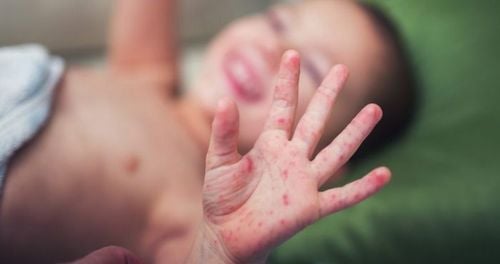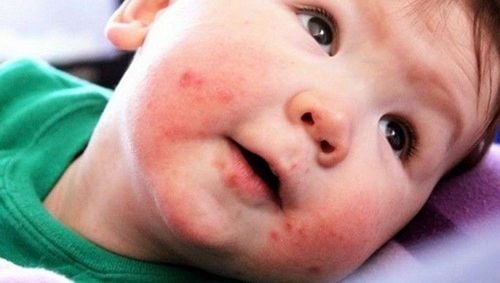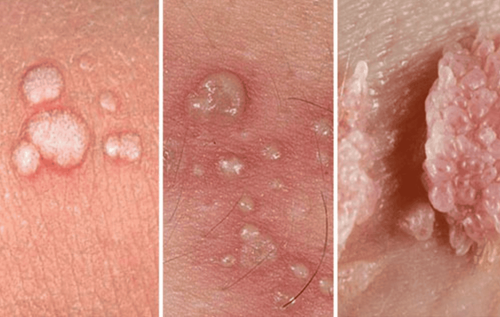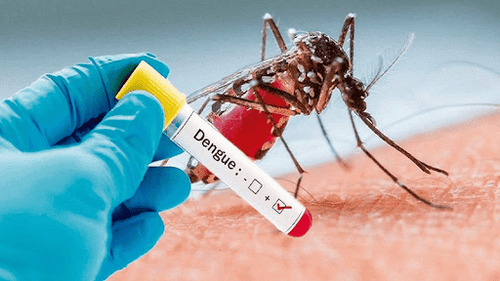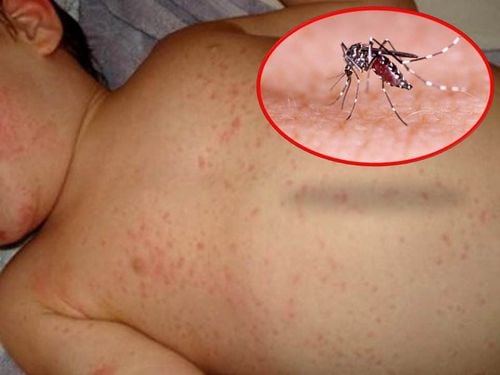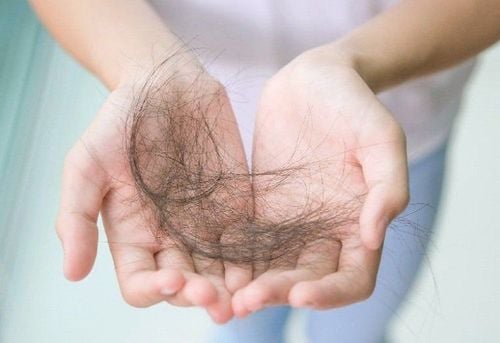This is an automatically translated article.
Prolonged hot weather alternating with alternating heavy rains is a favorable time for infectious diseases to break out on a large scale. The most dangerous of which are dengue fever and hand, foot and mouth disease.1. Dengue fever and outbreak of hand, foot and mouth disease
The Ministry of Health has warned that, at present, infectious diseases such as hand, foot and mouth disease and dengue fever are increasing sharply. While hand, foot and mouth disease is concentrated mainly in the southern and central provinces, dengue fever is present in most localities across the country. Since the beginning of 2019 until now, the whole country has recorded over 105,000 cases of dengue fever, including 10 deaths from dengue fever. According to experts, the epidemic situation will continue to increase in many localities. Without drastic prevention measures, the epidemic could last until November and seriously affect people's lives.
The Minister of Health has requested the Directors of Health Services of provinces and cities to monitor, detect early and thoroughly handle outbreaks so as not to spread and prolong. Three big campaigns to kill larva and larva are held from now until the end of the year. High-risk areas and crowded places such as markets, schools, bus stations or hospitals, etc. are sprayed with insecticides on a large scale.
In treatment, patients will be classified and treated by the local health sector, avoiding inappropriate referrals to limit overcrowding in upper-level hospitals, limiting cross-infection and death.
2. Dengue fever and hand, foot and mouth disease have many similarities
Due to many similar clinical signs, occurring at the same time, especially in young children, hand, foot and mouth disease and dengue fever can cause confusion and confusion for parents to recognize.
Dengue fever or hand, foot and mouth disease are both contagious diseases, so the first manifestation in the patient is a fever, then a rash. However, dengue fever is accompanied by a red rash, while hand-foot-and-mouth disease often has a blister-like rash on the skin. As for hand, foot and mouth disease, the first sign is a fever, then spots appear scattered in the mouth, on the palms of the hands and feet. When children are sick, they often cry.
Conditions of outbreak of dengue fever and hand-foot-and-mouth disease also have similarities, both in the rainy and sunny season. Because the epidemic occurs at the same time, everyone needs to pay attention to distinguish these two diseases, in order to have the best treatment and avoid complications for patients, especially young children.
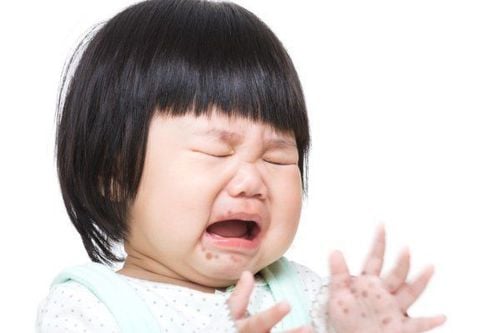
Xuất hiện các nốt rải rác trong miệng, lòng bàn tay và chân là triệu chứng của bệnh tay chân miệng
3. Hand foot and mouth disease progression
Hand, foot and mouth disease is common in children aged 1-5 years old, especially in kindergartens and kindergartens, and is often transmitted through the gastrointestinal tract.
The main pathogenic viruses are Enterovirus 71 (EV71), other EVs, Coxsackie A10,... The disease goes through stages:
Incubation period: about 3-7 days when the child has been exposed to an infectious source. pre-existing illness. Onset phase: usually about 1-2 days. At this stage, children have mild fever, fatigue, sore throat, anorexia, diarrhea several times a day. Full-blown phase: usually lasts about 3-10 days. Red sores or blisters appear on the lining of the mouth and tongue, easily confused with canker sores. A child's palms, feet, and buttocks may develop a blister-like rash (rather than a red rash like typhus or dengue fever). Children often have a high fever above 39 degrees Celsius with constant fussiness, trouble sleeping or lethargy, vomiting a lot, refusing to breastfeed, even weakness in limbs.... In this case, parents should take their child to the hospital. hospital right away. The disease often progresses rapidly, if not detected and treated promptly, it can become severe, the child is lethargic, shivering, rolling eyes, convulsions, rapid pulse, rapid breathing, causing dangerous complications such as encephalitis, myositis heart failure, acute pulmonary edema and even death. Remission phase: Children can recover in about 3-5 days if there are no complications. Treatment when children have hand, foot and mouth disease
Parents of children with hand, foot and mouth disease need to monitor the fever, give the child antipyretic drugs as directed by the doctor. orange. Bathe the baby in a airtight room with antibacterial soap, clean the teeth and tongue daily with salt water to avoid superinfection. Children also often have mouth ulcers, so give them cool, soft, and diluted foods.
4. Dengue fever disease progression
Dengue fever is a disease with many dangerous complications, if not detected and treated promptly, can cause plasma leakage, shock due to plasma leakage and cardiovascular collapse. Death from dengue fever can occur if the patient arrives at the emergency room late. Dengue fever is an acute infectious disease caused by the Aedes mosquito that transmits Dengue virus, transmitted by blood, usually developing through the stages of dengue fever:
Fever stage: sudden high fever 39-40 degrees Celsius in children. C for 2-7 days. Patients are often lethargic, tired, headache, sore throat, nausea, vomiting, may be accompanied by pharyngitis, upper respiratory infection, runny nose, diarrhea..., The initial symptoms of the disease are easily confused. with the common cold. Danger stage: the child has reduced fever, but there are additional signs of plasma leakage. Too much plasma leakage will lead to a state of shock that makes the patient struggle, cold skin, heart palpitations, sudden rise and fall in blood pressure... At this stage, the patient may have bleeding under the skin and mucous membranes. (nosebleeds, bleeding gums) and internal organs. Recovery phase: if there are no complications, the body will gradually recover, appetite, urinating a lot, heart rate begins to slow down, white blood cells and platelets increase.

Bệnh nhân sốt xuất huyết nên được nghỉ ngơi
Attention in the treatment of dengue fever :
Dengue fever does not currently have a vaccine to prevent the disease as well as no specific drug to treat it. Patients should be treated symptomatically as well as checked platelet counts according to the instructions of the doctor. When there are new signs of dengue fever, patients only need to go to front-line facilities to be examined, examined and instructed by doctors on how to treat at home. If the disease is mild, you can take care of it at home by: Let the patient lie down and rest. Give plenty of water to drink. Oresol solution and juice can be given to drink. For snacks: porridge, soup, milk. Use antipyretic drugs (usually oral Paracetamol or suppository, absolutely do not use aspirin to reduce fever), cool compress. Absolutely do not give infusions on your own: The infusion should be done in the hospital under the direction and close supervision of the doctor. If the child has any unusual signs such as fever, rash, vomiting, etc., parents need to take the child to a medical facility for an accurate examination and diagnosis.
Pediatrics department at Vinmec International General Hospital is the address for receiving and examining diseases that infants and young children are susceptible to: viral fever, bacterial fever, dengue fever, bronchitis , pneumonia, hand, foot and mouth disease in children, .... With modern equipment, sterile space, minimizing the impact as well as the risk of disease spread. Along with that is the dedication from the doctors with professional experience with pediatric patients, making the examination no longer a concern of the parents.
Please dial HOTLINE for more information or register for an appointment HERE. Download MyVinmec app to make appointments faster and to manage your bookings easily.




